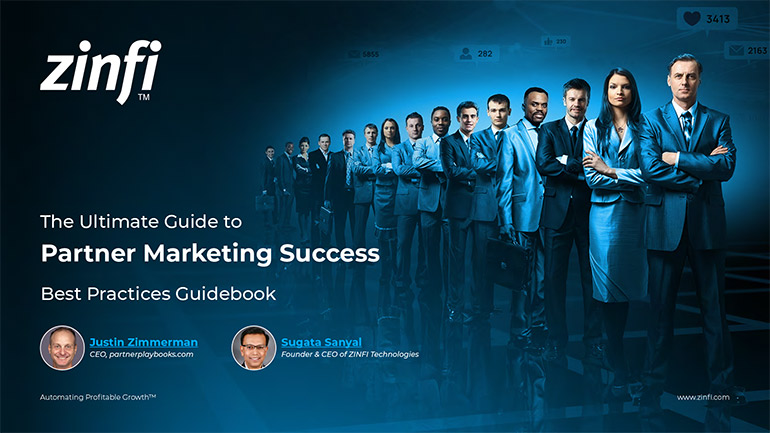Best Practices Articles

How to Use a PRM Tool to Train Your Partners
In this age of digital and remote work, partner training has moved online via partner relationship management (PRM) tools. Gone are the days when you used to travel for roadshows or have the partners fly into a training center for hands-on instruction. Whether you are dealing with hardware, software or service, a lot can be done online. Yes, certain trainings do require face-to-face engagement to connect the blue wire with the blue socket and the red wire with the red socket, but most training can now be done online. This is where a state-of-the-art PRM tool can make a big difference.
Whether you are building a new channel or upgrading the skills of your existing channel, training is the most critical and strategic activity that you can perform. Just as well-trained sales and service staff are crucial to the success of your direct sales operations, a well-trained partner base is essential to your channel success. While it’s true that many companies make training too complex or don’t invest enough in training programs, we have repeatedly seen companies achieve substantial ROI with a structured, consistent, high-quality training program, whether partners are being trained in demand generation, marketing, selling or servicing a customer base. To manage an effective training program in a digital world you need a state-of-the art PRM tool that can help you align your programs to your process so your people can efficiently and cost-effectively deliver programs locally and globally.
Let’s go through the five critical success factors for an effective partner training program. While these are not the only factors that you need to consider, they are the most significant drivers for most organizations trying to train a large group of people in a methodical fashion.
- Learning management system (LMS) – One of the core requirements for digital training is a PRM tool that has a state-of-the-art LMS. Your LMS should be able to provide tracks, courses and certifications. It should also be SCORM-compliant and be able to serve customized content based on various partner groups and profiles. The ability to personalize content to specific audiences is essential. Be sure that the PRM tool that you pick is flexible and configurable enough to address this aspect of your partner training needs.
- Face-to-face trainings – In addition to providing online training and an LMS, your PRM tool should be able to provide you with a robust offline training and event management platform. Unless you are selling software and can do the entire training online, you will have to consider at least some face-to-face training. This is essential for hardware or other goods. In the areas of retail and hospitality especially, live in-person face training will play a critical role in your success. Your PRM tool should be able to integrate online digital and offline physical training in a seamless way.
- Aligned incentives – Any kind of training will entail expenses. A fully trained partner base can drive more sales and lower service costs, but let’s not forget that training involves time (which you pay for) and resources. Because of that, whether a partner organization is going through online or offline training across multiple functions or vendors are offering training to partners, both the channel organization and the partner organizations must have appropriate incentives to benefit from meaningful, integrated training and reap the results from it. That’s why our PRM tool needs to be able to help you set up and track various incentives programs, and link them back to specific training events and programs.
- Lead distribution & management – One of the best ways to incentive partners is to give them leads once they are certified with specific product categories. Nothing excites more partners to make more money than the prospect of converting the knowledge they receive in training programs into real dollars. Your PRM tool needs to be able to link your training program not just to financial incentives but also to business incentives like lead distribution. A good PRM tool will make it easy for you to track your lead closure rate based on variables like partner certification rate.
- Help desk & support – Finally, better trained partners cost less for you to support, but you can also increase your sales by providing some partners with premium-quality support. For example, you can offer partners who are certified in certain categories access to premium support for free or for a certain number of hours per quarter, provided they maintain specified qualification levels. Your PRM tool should be able route partners—via partner groups or profiles based on their certification levels—to specific help desk access for premium support.
As you can tell, to provide world-class training you not only need a learning management system (LMS) in your PRM tool, but you also need other very important capabilities for offline training management, incentives management, lead distribution and management, and help desk and support. A state-of-the-art Unified Partner Management platform from ZINFI comes is fully modular, allowing you to start with a basic set of modules, such as partner onboarding and learning, and then add on additional modules to address various parts of your channel programs and needs. You should expect this level of modularity and flexibility from any PRM tool you invest in.
Best Practices Guidebook
 The Ultimate Guide to Partner Marketing Success Best Practices
The Ultimate Guide to Partner Marketing Success Best PracticesDownload Guide
 How to Start and Scale Partner Ecosystems Best Practices
How to Start and Scale Partner Ecosystems Best PracticesDownload Guide
 The Evolution of PartnerOps: Past, Present & Future Best Practices
The Evolution of PartnerOps: Past, Present & Future Best PracticesDownload Guide
 Mastering Channel Sales: Strategies, Best Practices, and Growth Tactics for 2025
Mastering Channel Sales: Strategies, Best Practices, and Growth Tactics for 2025Download Guide
 Winning with Partner Advisory Councils: Best Practices for Partner Engagement & Growth
Winning with Partner Advisory Councils: Best Practices for Partner Engagement & GrowthDownload Guide
 The Future of Partner Ecosystems Best Practices
The Future of Partner Ecosystems Best PracticesDownload Guide
 The AI Revolution: How Technology and Talent are Shaping the Future
The AI Revolution: How Technology and Talent are Shaping the FutureDownload Guide
 Top 105 Partner Management Metrics that Matter Best Practices
Top 105 Partner Management Metrics that Matter Best PracticesDownload Guide
 Mastering PRM Integration Best Practices
Mastering PRM Integration Best PracticesDownload Guide
 Building a Sales Partner Portal with Salesforce Best Practices
Building a Sales Partner Portal with Salesforce Best PracticesDownload Guide
 Building and Managing Partner Ecosystems Best Practices
Building and Managing Partner Ecosystems Best PracticesDownload Guide
 Mastering Co-Marketing and Co-Selling Best Practices
Mastering Co-Marketing and Co-Selling Best PracticesDownload Guide
 Transforming Partner Ecosystems Best Practices
Transforming Partner Ecosystems Best PracticesDownload Guide
 Mastering Partner Ecosystems Best Practices
Mastering Partner Ecosystems Best PracticesDownload Guide
 Mastering Partner Onboarding Best Practices
Mastering Partner Onboarding Best PracticesDownload Guide
 Partner Ecosystem Management Best Practices
Partner Ecosystem Management Best PracticesDownload Guide
 B2B Marketing in the Age of Intelligence Best Practices
B2B Marketing in the Age of Intelligence Best PracticesDownload Guide
 Multi-Partner Co-Selling Best Practices
Multi-Partner Co-Selling Best PracticesDownload Guide







